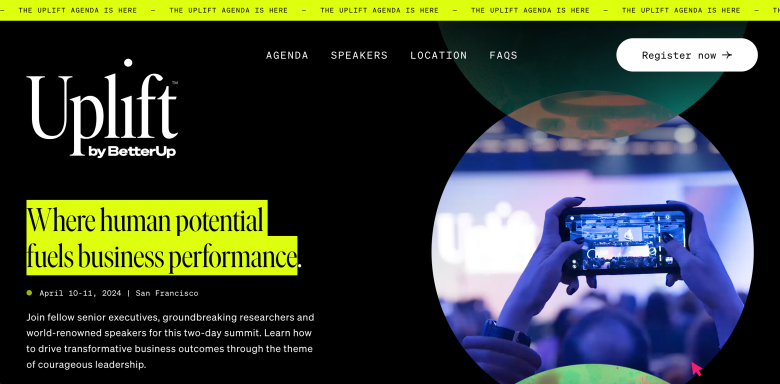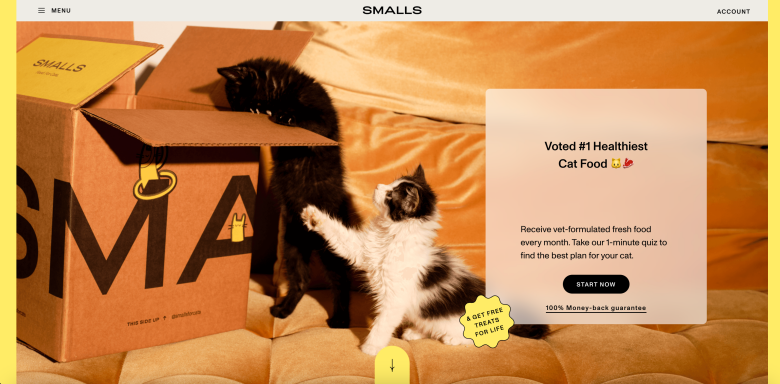Quick Answer
Choosing between a microsite and a landing page depends on what you want to achieve. To figure it out, we need to grasp the main differences. In simple terms, microsites are perfect for telling detailed brand stories and launching new campaigns, delving deep into content. Meanwhile, landing pages work well for specific campaigns, driving engagement and conversions with a clear call-to-action. Your choice depends on your goals and how you want to connect with your audience.
Navigating the digital landscape requires strategic choices, especially when it comes to Microsites and Landing Pages.
As a seasoned expert in digital marketing, I want to share with you the nuances I have learned of each to help you make informed decisions. By the end of this article, you will have uncovered the strengths of Microsites for brand storytelling and the precision of Landing Pages for conversion-focused campaigns.
Let’s dive in to discover which approach aligns best with your brand and business goals.
What Is a Microsite?
A microsite is a small, specialized website that is created to focus on a specific topic, campaign, or product. It is often used as a marketing tool to provide targeted information or to create a unique user experience.
Microsites can be temporary or permanent and are typically separate from the company’s main website. They are designed to drive traffic and engagement.
As Neil Patel from Ubbersuggest shares with us:
True to their name, a microsite is like a mini-website for your brand’s content. Brands often create these sites for a specific goal, such as an event or a campaign.
Neil Patel
When To Use Microsites
- Introduce your audience to new services
- Launch a new product line
- Advertise an event that requires supporting information
- Give users a more goal-focused experience
- Introduce specifics about a particular company project
What Is a Landing Page?
A landing page is a single web page that is specifically designed to capture a visitor’s attention and prompt them to take a specific action, such as signing up for a newsletter or making a purchase.
Landing pages are often used in online marketing campaigns and serves as a focused destination for visitors who have clicked on an ad or promotion.
Mailchimp for instance shares their insight for what a landing page is:
A landing page is a standalone web page that potential customers can “land” on when they click through from an email, ad, or other digital location.
MailChimp
When To Use Landing Pages
- Promote a new product such as an ebook
- Showcase exclusive offers with the objective to convert your audience
- Collect leads by offering valuable content
- Use landing pages for precise campaign tracking and actionable analytics
- Target a subset of your audience to prompt them to take an action
Microsite vs Landing Page: What’s the Difference?
A microsite is a mini-website with its own unique URL and content, often used for specific marketing campaigns. It typically has multiple pages and serves as a standalone entity.
On the other hand, a landing page is a single page within a website that is used to capture leads or promote a specific product or service. It has a clear call-to-action and is often part of a larger website, but it can exist on its own.
The Advantage and Disadvantages of a Microsite
Pros
- Microsites allow for targeted and specific messaging to a particular audience
- Great tool for marketing campaigns, product launches, or events
- They provide a more personalized user experience compared to a company’s main website
Cons
- One major disadvantage: Microsites require additional resources and time to maintain. With a separate web hosting, domain name, and content management system, a microsite can add complexity to a company’s digital presence.
- A microsite may detract from the overall SEO efforts, as it may not garner as much traffic and authority as the main website.
- Maintaining consistent branding and messaging across multiple microsites can also be challenging.
The Advantages and Disadvantages of a Landing Page
Pros
- Landing pages have the ability to focus visitors’ attention on a specific offer or campaign
- A landing page increases the likelihood of conversion
- Provides valuable data on visitor behavior, which can be used to optimize future marketing efforts
- A well-designed landing page can improve brand perception and credibility
Cons
- Creating and maintaining multiple landing pages can be time-consuming and resource-intensive
- If not properly optimized, a landing page may not effectively convert visitors, leading to wasted time and resources
- Some visitors may find landing pages to be too sales-focused, which can turn them away from engaging with the brand.
- A landing page requires careful consideration and planning to ensure its conversion effectiveness
What Does a Good Microsite Look Like?
BetterUp’s Uplift Event

BetterUp strategically developed a specialized microsite to amplify the promotion of their Uplift event.
Enhanced with multiple pages, the microsite features a user-friendly top menu, offering detailed insights into the agenda, speakers, location, and FAQs.
This deliberate approach ensures comprehensive information delivery, which is not unattainable on their main website. Whereas, a landing page, limited by space, would have fallen short in conveying the richness of event details.
What Does a Good Landing Page Look Like?
Smalls.com

Smalls.com minimizes distractions with a compelling hero image and a prominent, clear CTA above the fold. This prompts users to engage with their service right away.
The rest of the landing page is dedicated to introducing their service, outlining benefits, and featuring client testimonials.
With a focused approach on a singular call-to-action, this engaging landing page effectively achieves its objective.
When to Use Landing Pages and Microsites
Landing pages are best used when you want to direct traffic to a specific offer, product, or promotion. They are great for targeted marketing campaigns and can help increase conversions by providing a focused message and call-to-action.
On the other hand, microsites are better suited for more comprehensive marketing initiatives that involve multiple products or services. They offer a more immersive and interactive experience for the user, allowing for more in-depth information and engagement. Microsites are also beneficial for branding or launching a new product line, as they provide a dedicated space to showcase all the related content.
In summary, landing pages are ideal for singular focused purposes, while microsites are better for broader, multi-faceted marketing efforts. Understanding the strengths and best use cases of each can help you make the most of your digital marketing strategy.
FAQs
1. What is the difference between a microsite and a landing page?
A microsite is a separate website that can function as a subdomain or individual domain and typically has multiple pages, whereas a landing page is a single web page used to promote a specific product or service with a focused call-to-action.
2. When should I use a microsite vs a landing page?
Use a microsite when you want to focus on a specific marketing campaign, cater to a target audience with a dedicated user experience, or need to provide in-depth content about a particular product or service. Use a landing page when you want to facilitate conversion for a specific offer or promotion with a clear call-to-action.
3. How does a microsite differ from the main website?
Microsites are separate from the main site and can be tailored to focus on a specific brand, product, or campaign, while the main website serves as the primary online presence for a company or organization.
4. What are the advantages of using a microsite over a landing page?
A microsite provides more room for creativity and detailed information, supports complex navigation and content organization, and can enhance brand awareness through a distinct online presence compared to a landing page.
5. Can a landing page be created using a page builder like WordPress?
Yes, a landing page can be easily created using a page builder like WordPress or other website building platforms to design and optimize the page for specific conversion goals.
6. Are landing pages always single pages and microsites always multiple pages?
Yes, landing pages are typically single pages focused on a specific offer or promotion, while microsites often consist of several pages to provide comprehensive information about a particular topic or campaign.
7. What’s the purpose of a microsite and how does it differ from a landing page?
The primary purpose of a microsite is to create a standalone website that focuses on a specific brand, product, or campaign
The Bottom Line
Choosing between a microsite and a landing page boils down to your specific goals.
This article has also unpacked the differences and strengths of each, helping you make informed decisions for your brand and business.
Dive into your audience needs, your market landscape, what’s working for your competitors and match it with your current business goals. This information, along with this article, should help you pick whether a microsite or a landing page is right for you.
Dive into my other articles to further refine your digital marketing strategy and enhance your online presence. Happy reading!


Hello there! Do you know if they make any plugins to help with
SEO? I’m trying to get my website to rank for some targeted keywords but
I’m not seeing very good success. If you know of any please
share. Appreciate it!
Hello. Installing SEO plugins alone won’t directly help you rank on search engines. Think of them more like SEO management tools that measure your SEO efforts. If you’re looking to rank your site, you need to run a thorough keyword research to pick the best keywords for your site and create an SEO strategy, create valuable content that includes and references your keyword strategically, add images with alt text that references your main keyword for the page, and work on off page SEO as well. Best!